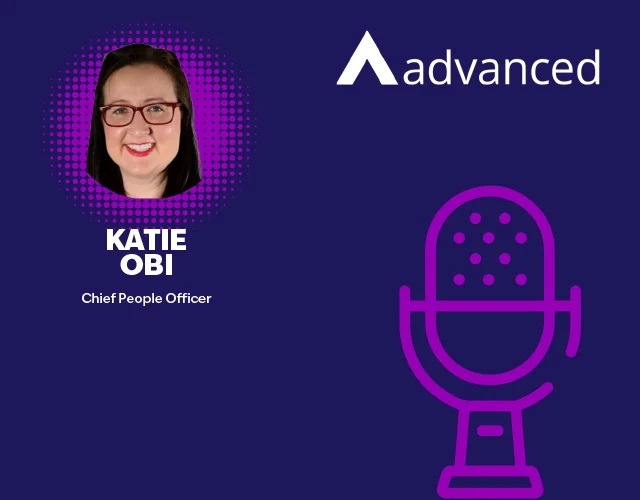How to Deliver Quality Feedback to Drive Growth

The past several years have brought about countless changes to the way we work, the environment in which we work, and what we want out of our jobs. In turn, organisations and leaders have had to take a step back and rethink how they are supporting success in their workforce.
In our latest podcast episode, Cathy Brown (Engage Employee Podcast host and Co-Founder of Handley Studios Ltd.) was joined by Katie Obi (Chief People Officer at Advanced) to discuss the power of feedback. Specifically, they explored how organisations can unlock high performance by facilitating top-level feedback.
FEEDBACK AS A POWERFUL TOOL
Most leaders recognise how feedback impacts engagement, knowing that it is a powerful tool from both an organisational and individual perspective. According to Katie, feedback helps employees understand company goals and how the work they do daily helps contribute to their realisation. In turn, this makes people feel that what they do is important, changing the way they feel about coming to work every day.
While feedback can help people feel empowered, recognised, and supported, it can only do so if it is delivered correctly. Revealing how managers should deliver feedback, Katie explained that quality feedback needs to be specific, relevant, constructive, unbiased, and credible. In other words, it needs to come from a source that the employee trusts and this person must also have the appropriate skills.
HOW TO DELIVER CONSTRUCTIVE FEEDBACK
Sharing recent research findings, Katie told us that in 90% of situations, performance feedback should be positive, with the remaining 10% concerning technical roles and safety risks. Otherwise, managers should be able to give constructive feedback in a positive frame, focusing on how learning and development will result in growth.
“None of us like to get feedback in terms of things we have done wrong because we all come to work really wanting to do a good job and actually doing the best we can with the tools we have. So, it stings when you get negative feedback but, at the same time, everyone wants to grow, and you only grow by learning new ways of doing things,” Katie said.
SHOULD PERFORMANCE REVIEWS HAPPEN ONCE A YEAR?
Citing another one of Advanced’s survey findings, Cathy shared that only 16% of HR people currently use the continuous performance management model. With years of research looking into the pros and cons of this model, Katie argued that what works best is a combination of both annual and continuous feedback mechanisms.
While most companies still work on an annual cycle, where company objectives are also set on an annual basis, having a conversation about goals and performance just once a year is not enough. Instead, managers need to avoid recency bias and interject when they notice things going off track to remind people about the goals set at the start of the year.
FEEDBACK IS NOT A ONE-WAY STREET
Employees often view feedback as a one-way street, where they seldom have the chance to voice their concerns. According to Cathy and Katie, this should not be the case and leaders should take a number of steps to open up communication.
Firstly, it is important to think about the different ways people like to receive feedback (e.g., one-on-one or publicly). Secondly, managers must have a good rapport with their people and allow them to ask questions during their review or give them time to digest the information and have a follow-up discussion. Finally, organisations must ensure that they act on the feedback, acknowledge suggestions, and ask that they are held accountable for them.
TAILOR FEEDBACK TO THE INDIVIDUAL
Time and time again, our speakers highlighted that every employee is an individual with different perspectives, needs, and preferences. Underlining this using a personal example, our host shared:
“I'm neurodiverse, as we now realise that many people are, and I certainly didn't realise until a couple of years ago, but actually I find traditional performance management unmotivating and very, very difficult to get on with. And it was a problem constantly throughout working in a large organisation. And it doesn't actually take much to tweak, but it does need that awareness and the willingness to do so.”
Agreeing with Cathy, Katie said: “Everyone is unique and an individual. Even if someone identifies as being neurodiverse, there are many different aspects of neurodiversity and what works for one person doesn’t always work for another person. I think this is where that individuality is so important and being flexible and having open communication about what works and what doesn’t.”
From there, managers can tailor the process to have conversations that truly make a difference (whilst keeping within the parameters of transparency, fairness, and consistency).
ATTRACTING AND RETAINING EMPLOYEES
Concluding the conversation, Cathy asked Katie to leave our listeners with some advice for those struggling with attracting and retaining people.
Katie noted that the most important thing to do is to understand the ‘why’. To do so, you must talk to as many people as you can and uncover the reasons they may consider leaving your organisation. A crucial piece of advice was to never take comments at face value but to dig deeper instead.
“The final straw for someone is not the same as the root cause and what built up over time,” she explained.
Finally, Katie argued that managers must adopt ‘stay’ interviews with top performers to thank them, understand what motivates them, and ask what they need to thrive.




